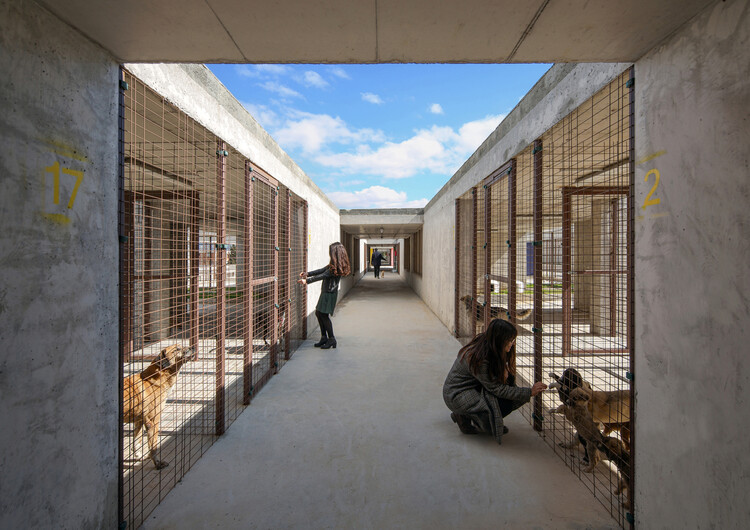
-
Architects: Mert Uslu Architecture
- Area: 29916 m²
- Year: 2022
-
Photographs:Zeren Yasa, Mehmet Yasa
-
Manufacturers: Daikin, EGE, Kale, Novawood, Weber

Text description provided by the architects. The practices conducted in Turkey in regard to stray animals are focused primarily on providing much-needed care to abandoned, injured, ill, disabled, or destitute animals with the intention of releasing these animals back to their natural surroundings at the end of their treatment. With the spatial arrangement of the open and closed spaces focusing on the interaction between humans and dogs while at the same time reinforcing the theme of adoption, the facility sits on a 110.000 m2 site located in the Gökdere district of the town of Bornova in Izmir. Being the first of its kind, this facility was not only designed as a temporary care center but also a center for rehabilitation that is predicated on the interaction between humans and dogs, providing a space that promotes the idea of reciprocal rehabilitation and can be seen as an alternative space for families to spend quality time and reinforces human-dog interaction.



The shelters are placed along the north and south edges of the site and are separated by the central zone that contains an open amphitheater, administrative units, and shelters for puppies and purebred dogs. Units for veterinary services, a quarantine unit, and a shelter for aggressive dogs are located at the east end of the site. These shelter units, which form the foundation of the project, are designed to address the problems that many shelters face regarding hygiene, security, accessibility, and lack of green space, with open and comfortable spaces that include soft scapes comprised of green and dirt areas further integrating the project with the surrounding landscape.



The design and spatial arrangements of the shelter units were developed based on decisions to have sufficiently spacious living units, natural light and air ventilation, an automatic watering system, soft scapes within the enclosed spaces, and green and blue transparent elements. Also, the wire mesh screens that line the façades of the interior circulation axis provide and reinforce the visual connections not only between the visitors and dogs but between the dogs as well.



To create safe entrances and exists for the accommodation spaces that will be provided to the personnel in charge of taking care of the dogs, the entrances have been designed as two sections. Within the area allocated for administrative use, additional spaces dedicated to educational seminars and workshops on dog care and adoption have also been included in the design. In addition to this, educational institutions that are specialized in working with disabled children will also be able to take advantage of the rehabilitative human-dog interaction opportunities provided at the center. The exposed concrete walls that serve as both shading elements and exhibition elements are added to the shelters located on the east wing of the central amphitheater and will have information regarding the resident dogs and their breeds giving the visitor interested in adoption essential information about the physical aspects and behavioral characteristics of each breed.

In addition to this, the amphitheater placed in the center of the project is the focal point of the entire complex and gives visitors the opportunity to spend time and interact with the dogs that they are considering adopting. In accordance with all the design parameters and with the intention of releasing these animals to their natural surroundings at the end of their treatment, the environmentally integrated design of the Pako Street Animal Social Life Campus aims to be a precedent for future facilities.




































